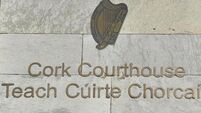Glass ceiling a visible obstacle for many women
Our record in appointing female production and operations managers is also dismal: we are second from the bottom. Equally so when it comes to political decision making, with the number of female politicians at national government level the fourth lowest in Europe.
Women make up a bigger proportion of members in the European Parliament, which is also true for Ireland with a third of our MEPs female.
Only when it comes to specialist managers does Ireland shine; we are unique in having more women in these positions than men. We also do well in research and development, with 28% involved in this vital area.
In national governments, male ministers and junior ministers outnumber women in almost every member state. Only in Sweden are there equal numbers, while Ireland has less than the EU average, with women in about 20% of the ministries.
Women do not do much better in the European Commission. Despite a call for countries to put forward more women three years ago, just five of the 20 commissioners, or 25%, are female.
There is an even greater disparity within the civil service of the Commission, with men occupying 78% of the top managers Grade A jobs and 59% in grade B, while over 80% of those in grade C mostly secretarial jobs are women.
Such is the inequality that a female adviser to the famous Goldman Sachs agency recently redefined the glass ceiling as a "thick layer of men".
Rather than organising a coffee morning to celebrate International Women's Day, the European Commissioner for Employment and Social
Affairs, Anna Diamantopoulou, issued an analysis of how women fare in work, politics, education, research and of course pay.
She concluded that, while many laws have been introduced, few countries have backed the demand for equality with action.
"Member states have largely paid lip service to equality. This must change, both for woman and also in the interests of political and economic Europe as a whole", she said.
Perhaps the most serious under-representation is in the Convention drawing up the blueprint for the future of the EU.
Not only are there precious few women in the working groups, but the final decision will be taken behind closed doors by the 25 men that head up the governments of Europe.












